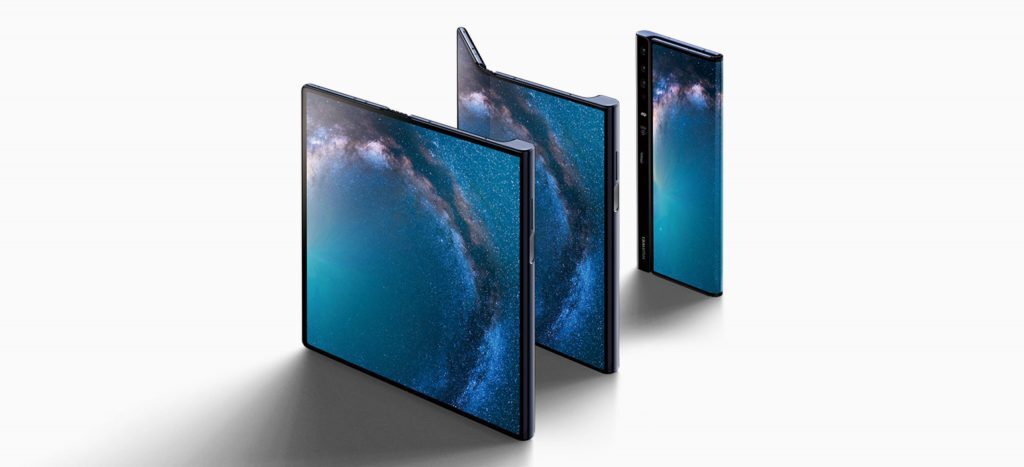Logic dictates that smartphone screens can’t bend, right? Except they can. The newest sensation to hit these all-important devices are foldable screens. Last week Samsung got the jump on its competitors by announcing its Galaxy Fold before the annual Mobile World Congress. As the cellular industry gathered in Barcelona this week, Huawei announced their own foldable, the Mate X, the day before the main conference began on Monday.
Long rumoured and frequently leaked, these new handsets are a technological marvel with bendable screens that cynics might call a solution for a problem that doesn’t really exist. Those sceptics might recall the curved screen phenomenon of televisions, which were similarly amazing technology that never really solved any pressing problem and ultimately were more hype than substance. But they certainly are tech wonders.
The Samsung folds into itself, with an outside hinge, and looks not unlike those Nokia Communicators but with a bright 4.6in screen on the outside and opens into a 7.3in (18.5cm) tablet. The Huawei folds the other way, mitigating the need for another screen by having the foldable display on the outside. Its 8in ((20cm) display folds in half with a 6.6in front screen and 6.4in rear one.
Both phones use 5G, the new data standard of the next generation of wireless broadband, which offers significantly faster downloads speeds and is necessary to accommodate all the devices that now connect to the internet.
It’s an interesting new category of smartphone, which, although expensive now, presents an interesting potential. Tablets and the in-between phablet phones are too large to fit into your pocket even though their larger screens are better suited to reading, watching video and consuming other media. A foldable handset solves that by giving you a phone with the usual-sized screen that unfurls into a tablet when you need it.
It seems like an obvious evolution of screen size, especially since the phone can quickly become so much more.
The Mate X is “a voyage into the uncharted” Richard Yu, CEO of Huawei’s consumer business told the crowds at its launch on Sunday. “As a new breed of smartphones, Huawei Mate X combines 5G, foldable screen, AI and an all-new mode of interfacing to provide consumers with an unprecedented user experience,” he added.
Despite the thrill of these clever foldable displays, they will both be enormously expensive when they ship later this year. The Galaxy Fold will cost US$1,980 (R27,600) and the Mate X €2,299 (R36,400) – which puts them pretty much out of reach of the average consumer.
But don’t let these prices fool you. Give Samsung and Huawei – the number one and two smartphone manufacturers – a few years, add in the inevitable economies of scale and they’ll be more affordable. And the use case may become clearer.
Other manufacturers are also entering the foldable game. LG revealed its V50 ThinQ on Sunday but it’s really two screens with a hinge in the middle. It lets you run either two apps or different functionality on each screen, such as a YouTube video on one and comments on the other; or a game with the controllers on the second screen.
Meanwhile Xiaomi’s rumoured foldable device was a notable absence from its launch event on Sunday.
These are early days for foldable phones, but you can expect them to get thinner, slicker and more useful in the next few years.
This column first appeared in Financial Mail




